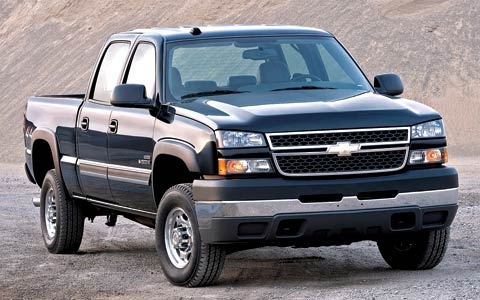
Chevrolet C/K and GMC trucks can come equipped with diesel motors, but it may become necessary to convert the truck to a gasoline engine. Conversion involves replacing the engine, computer, fuel tank and lines. In some cases, it may be necessary to modify motor mounts and exhaust systems, but most Chevrolets with the 6.2 or 6.5 diesel motor will easily accommodate the GM 350-cubic-inch gasoline engine they were designed for. The average backyard mechanic can convert a diesel Chevrolet to gasoline in about 10 hours.
Take out the diesel motor by removing the radiator, intake manifold, exhaust manifolds, ignition system, computer and air system, then disconnecting the transmission and lifting the motor out of the truck with a hoist. The A/C system will need to be drained and disassembled. There will also be many parts left over from this procedure, so store them carefully. Label the parts, if possible, and keep bolts and nuts together. Some parts will be reused.
Extract the diesel tank, fuel pump and filters by unbolting them in a counter-clockwise direction. If relatively new, the lines can be cleaned out and left in place. While most newer Chevrolet trucks have the fuel pump embedded into the tank, older models will have either an electronic fuel pump mounted in the front of the tank or a mechanical pump attached to the engine.
Install a gasoline fuel tank and pump, and attach the lines and filter using a line pipe wrench and socket set. The lines can be blown out with air and dried to remove the diesel fuel, then reused. The fuel line will terminate at the intake manifold, and the manifold for the new motor may require that a length of fuel hose be added to the line, depending on the placement of the fuel intake on the manifold used. GM 350 motors have either front or rear fuel intake placement, depending on the model.
Install the new gasoline motor by lowering it into place, then connecting the transmission, radiator (reused), accessories (reused), exhaust manifolds (reused) and existing air system. New motor-mount bushings are not required but are recommended. A new computer will be needed, and it will connect with the truck's electrical wiring harness at the same terminal used for the diesel motor, if they are similar model years. When not using a computer, the only connections required to the existing system are for the alternator, battery and ignition system. The truck's subsystem, for lights, radio and interior accessories, connects to the electrical system through the battery. Some security systems, emissions equipment and safety restraint systems will not work without a computer, so check regulations before modifying a truck for use without one. The new motor should include an ignition system, which is not used with a diesel setup.